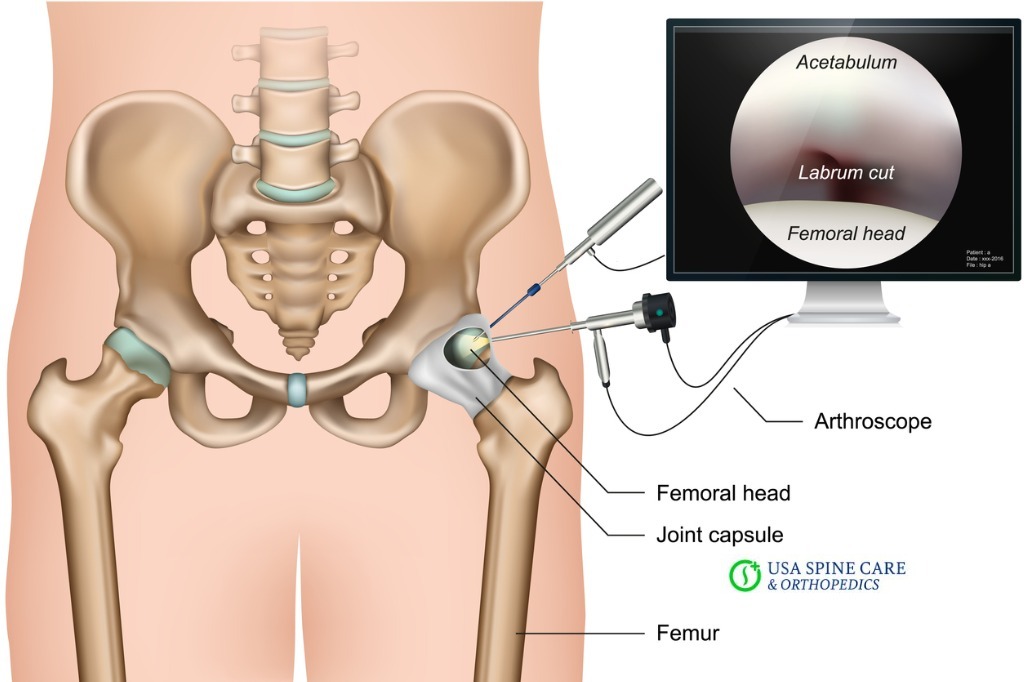- Conditions
- Procedures
- Patient care
- Why choose us
- Our Doctors
- Contact
What is Osteoarthritis of the Hip?

A guide to hip osteoarthritis
It is not surprising that the hip joints are such a common location for the condition known as osteoarthritis to develop. The hips are one of the major load bearing joints in the body, absorbing stress whether we’re sitting, standing or moving. The combination of years of everyday wear and tear combined with natural changes in the body mean millions of people live with osteoarthritis of the hip every year.
Although this can be a debilitating condition that negatively affects quality of life and the ability to enjoy daily activities, there are ways to successfully manage hip osteoarthritis. By learning more about the condition and available treatments, you can work more closely with treatment professionals to develop a successful plan of care. Take a moment to read over this brief guide and don’t hesitate to reach out if you have any questions or would like to learn more.
What are the causes and risk factors for osteoarthritis in the hip?
The number one cause of osteoarthritis is the natural aging process. Over time, our bodies dry out and begin to become more brittle. This is especially true of the protective cartilage and synovial fluid that allows for smooth joint motion. These layers can eventually wear down to the point where the bone surfaces of joints are exposed, causing a high degree of friction.
The resulting joint inflammation is known as osteoarthritis. While no one can avoid the natural aging process, there are several risk factors that increase the chances of developing this condition in the hips or elsewhere in the body. Here are some common osteoarthritis risk factors:
- Poor posture or body mechanics, particularly among people who work a physical job
- Being overweight or obese, which increases pressure on the hips
- Smoking, which can reduce circulation and damage the cartilage
- Eating an inflammatory diet, including processed sugar and saturated fats
- Living a sedentary lifestyle, which can cause muscle breakdown and cardiovascular degeneration
By practicing a healthy lifestyle and avoiding activities that place excess stress on the hips, patients can slow down the forces that lead to hip osteoarthritis.
Common symptoms for osteoarthritis of the hip
It is possible to develop osteoarthritis without experiencing symptoms, but as a progressive condition, patients will often experience some degree of discomfort or limited mobility over time. By recognizing the symptoms as early as possible, it is possible to be proactive about treatment and have the best opportunity to successfully manage this condition. People with osteoarthritis of the hip typically experience:
- Hip stiffness and reduced range of motion
- Locking or sticking in the hip
- Aches and pains in the hips
- Radiating pain into the lower body
- Cracking, popping and grinding in the joint, also known as crepitus
- Weather-related symptoms, including increased discomfort during rain showers
With the help of a doctor, patients can determine whether these and other symptoms are related to arthritis or another potential cause.
Diagnosing hip osteoarthritis
When meeting with a doctor, whether a general practitioner or specialist, patients can expect to undergo the following steps:
- Questions and answers about specific symptoms and regular activities that have been disrupted
- Review of personal and family medical history
- Physical examination and movement tests
- Diagnostic imagery, including X-ray and MRI
Osteoarthritis is not a reversible or curable condition, so the primary goal of treatment is to manage symptoms, promote function and slow down progression, if possible. This is very often accomplished with conservative treatment options.
Treating osteoarthritis with conservative treatments
Common nonsurgical treatments for osteoarthritis of the hip include:
- Periods of rest mixed with periods of activity to avoid becoming sedentary
- Physical therapy to mobilize and strengthen the hip
- Nonsteroidal anti-inflammatory drugs
- Corticosteroid injections
- Lifestyle changes, including posture improvement and eating an anti-inflammatory diet
It may take some trial and error to find the right combination and balance of therapies that are right for you. However, by committing to conservative therapies and healthy lifestyle choices, many patients are able to perform daily activities and enjoy a good quality of life.
Surgical options for hip osteoarthritis
For osteoarthritis, hip surgery is usually a last-resort treatment attempted when symptoms are seriously debilitating and do not respond to nonsurgical methods. There are a number of procedures that can help with arthritis cases, including partial and total hip replacements. The goal of these procedures is to replace all or part of a damaged hip joint with a prosthetic that reduces pain and stiffness in the hip while increasing smooth motion.
With specialized techniques and microsurgical technology, these procedures can be performed on an outpatient basis with minimal disruption to surrounding soft tissue.
Learn more when you reach out to USA Spine Care
If you are seeking relief from hip pain related to osteoarthritis or another condition, contact USA Spine Care today. Our experienced and compassionate team can help you learn more about your condition and potential treatment options.
Contact us today to learn more. Call toll free 1-866-249-1627.
Osteoarthritis of the Hip "Quick Answers"
Trauma or injury, degeneration joint disease due to wear and tear over time, and cartilage damage are causes osteoarthritis of the hip.
Low-impact exercise, and living a healthy lifestyle are the best ways to slow osteoarthritis of the hip. Some studies also show that certain supplements help with cartilage formation. According to a study published on NIH: Glucosamine (G) 1,500 to 2,000 mg/d and chondroitin sulfate (Cs) 800 to 1,200 mg/d and avocado-soy unsaponifiables (ASU) 300 to 600 mg/d, taken together or alone, are useful as adjunct therapies in cartilage disorders.
Osteoarthritis of the hip can be treated both non-surgically and through surgical procedures:
- Exercise
- Physical Therapy
- Pain management
- Hip Resurfacing
- Total Hip Replacement
- Regenerative Medicine
